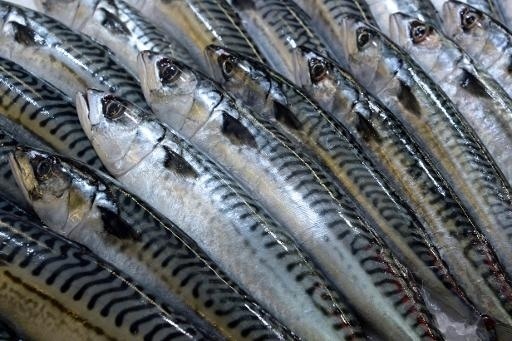
Norway Mackerel Round 挪威鯖魚(每條約1磅)

In the 1980s, after years of overfishing, the Japanese mackerel fishery crashed. At that point, the Japanese started buying mackerel from Norway.
Arne Duinker is a researcher at NIFES (the National Institute of Nutrition and Seafood Research) in Bergen who has led a research project on Norwegian mackerel.
Arne Duinker is a researcher at NIFES in Bergen. (Photo: NIFES)
“It was clear that the amount of fat increased as the season progressed. But we wanted to know more about the details. The Molecular Imaging Center at the University of Bergen has a new and very advanced MRI device that they use for mice and rats. We sent the mackerel through this machine,” Duinker said.
The MRI machine provided the researchers with beautiful pictures. They clearly revealed why the Japanese prefer mackerel from Norway. Mackerel are very lean in April, and the amount of fat increases during summer and fall. At its peak, Norwegian mackerel contains twice as much healthy fat as fish caught off Japan.
“The fish is very lean after spawning in the spring, but the amount of fat increases. In addition, we observed how the fat becomes more and more marbled into the meat,” said Duinker.
This provides more flavour and the meat becomes succulent.
The marbling in mackerel is similar to what is seen in pork. If you buy a cheap pork chop, the fat is layered on top of the meat and is usually cut away. In an expensive pork chop the fat is dispersed – marbled – into the meat.
The amount of mackerel in the Norwegian Sea has increased in recent years. It is now common even outside northern Norway.
A shoal of mackerel can be nine kilometres long and four kilometres wide, and it can penetrate 40 metres down into the ocean. In total, the catch of Northeast Atlantic mackerel now approaches one million tonnes annually.
Mackerel spawn west of Ireland in the spring. But they hardly eat during this time. They then swim towards Iceland while gorging on plankton and small fish, and fatten up.
“When the shoals head for the coast of Norway, they eat less. The fat moves from under the skin and into the meat. That's when the mackerel is really good,” says Sperre.
His recommendation is clear. “Do as the Japanese: eat mackerel in September and October!”

